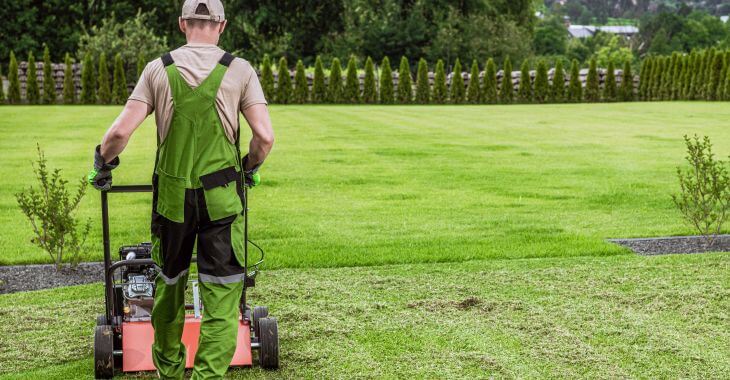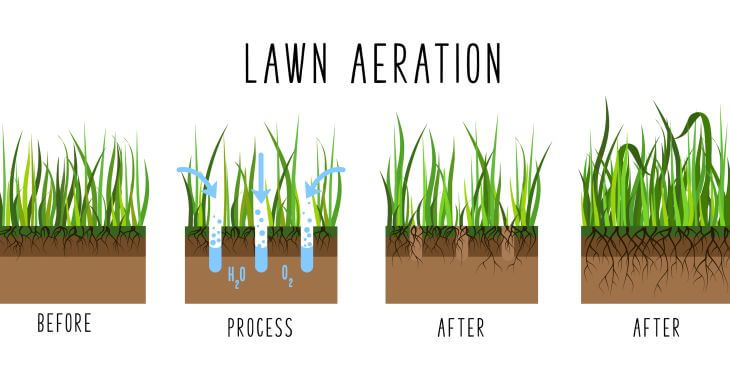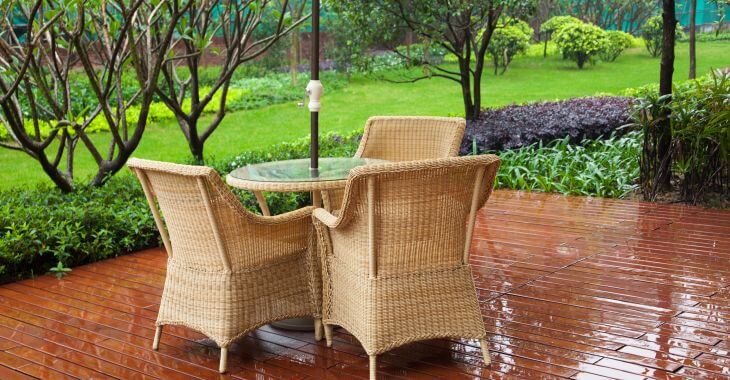Benefits of Core Aeration for Your Lawn

Maintaining a healthy lawn does not happen by accident. Most homeowners work hard to keep their lawn lush and green or have a landscaping team that does it for them. From fertilizing and watering to routine mowing and edging, your lawn takes constant care to help it thrive. One lawn treatment that can have a dramatic impact on the health of your grass is core aeration. If you have a lawn that is struggling to thrive, aerating your turf could be the solution and may impart many benefits to keep your lawn healthy and looking fantastic.
What Is Core Aeration?
Simply put, aeration means adding air. In a core aeration lawn treatment, you are introducing air back into the soil. Aerating a lawn removes small “plugs” of soil to allow air and water to penetrate deeper into the soil. A core aerator is a tool that has hollow tines that penetrate the thatch and soil in the lawn and remove the plugs of thatch and soil. You could aerate your lawn manually by poking holes into the lawn every few inches, but that could take a long time. A core aerator does it quicker and more efficiently.
5 Benefits of Core Aeration
Why should you aerate your lawn? Just like all plants, grass needs certain nutrients and conditions to thrive. Aeration makes it easier to deliver nutrients to your lawn and maintains an ideal environment for grass to thrive. Here are the five main benefits of core aeration.
- Reduce Thatch
- Thatch is the accumulation of dead grass and debris that covers your soil on your lawn. When it becomes too thick, it can strangle and suffocate the roots of your grass. Thatch can insulate the soil, keeping water, air and nutrients from reaching the grass roots. Core aeration breaks up thatch to allow air, water, fertilizer and seeds to reach the soil beneath it.
- Loosen Compacted Soil
- Over time, soil in your lawn can become very compacted. Foot traffic, lawn equipment, rain and other factors can make soil extremely dense, choking the roots of your lawn. Core aeration digs into dense or compacted soil, loosening it to allow roots to grow. Once the soil is loosened, nutrients can penetrate deeper to allow grass to flourish.
- Air Penetration
- Plants needs air to flourish – they feed off the carbon dioxide in the air and release oxygen for us to breathe. The roots of grass need air more than the blades. Creating holes that allow air down into the soil creates a healthier environment for grass to grow.
- Easier Water and Fertilizer Delivery
- If your soil is compacted or covered in thick thatch, you may be wasting water and fertilizer. Aeration allows the water and fertilizer you feed your lawn to reach the roots in the soil and nourish your lawn. This can save you money and improve your lawn care efforts.
- Preparation for Overseeding
- Adding new seed can revive old lawns and bring new grass for a thicker turf. If you overseed on compacted soil or on top of thick thatch, most seeds will never be able to sprout. Core aeration improves the results of overseeding by providing loose soil for seeds to sprout and thrive.
Aerating is best performed in the spring or fall – if you are overseeding with your core aeration, spring is best. In most lawns, an annual aeration service can keep the soil loose and thatch minimized to maintain healthier grass year-round.
Signs a Lawn Needs Aeration
How do you know if your lawn needs aeration? There are a few tell-tale signs that it is time to schedule core aeration. When a lawn is not getting the nutrients it needs, it is much harder to maintain lush, green grass. Some of the signs that it is time to aerate your lawn include:
- Visibly thick thatch – thatch should not be more than a ½ inch thick
- Water pools on the surface
- Grass looks dull and wilted
- Brown or yellow spots on your lawn
- Thin grass
- Bare patches
When your lawn is not thriving and you have some of these signs of compaction of thatch and soil, it may be time to schedule core aeration and overseeding. This can penetrate and break up the thatch while loosening the soil to allow air, water and nutrients down to the grass roots. Once you overseed, the new seeds will thicken your grass and cover bare patches in your lawn.

Core aeration can improve the health of your lawn and make it easier to maintain. For the best results, you will need a soil aerator to perform this lawn treatment, or you can contact a local landscaper who offers core aeration services. It may be worth the investment to have a professional complete this service to keep your lawn healthy and simpler to maintain.
